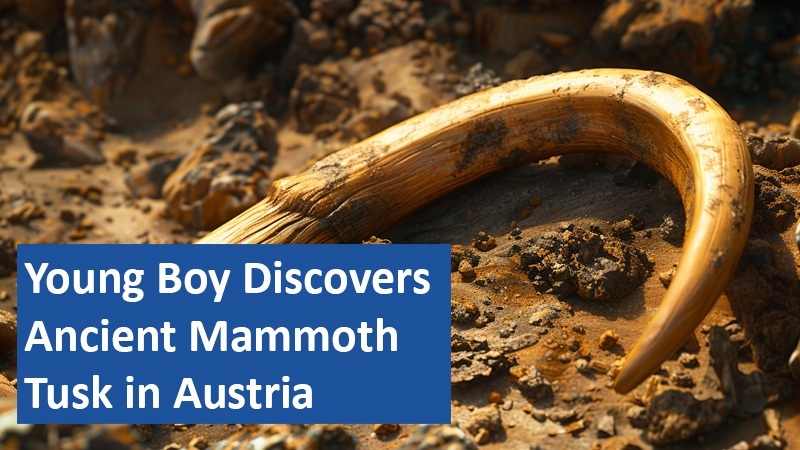A bike ride led eight-year-old Henri to a remarkable discovery—an enormous prehistoric tusk buried near his Austrian hometown. The boy’s find has attracted significant attention from archaeologists and scientists eager to examine the ancient relic. Though initially mistaken for petrified wood, Henri’s discovery could be an important link to Austria’s distant past.
By Sadie Watkins
A Chance Discovery Sparks Excitement

During a Saturday bike ride in Mattersburg, Henri stumbled upon what looked like a long piece of wood poking out of the ground near a construction site. However, upon closer inspection, he realized it was something far more extraordinary: a massive tusk measuring around six feet in length. According to Austrian news sources, the tusk was uncovered by recent excavation work for a retention basin. Henri, a budding archaeology enthusiast, quickly alerted local authorities to the find.
Experts Examine the Origin of the Tusk
Initial analyses suggest the tusk might belong to a species of ancient elephant or possibly even a mammoth. While some scientists speculated that it could have originated from a European forest elephant, others lean towards the more iconic woolly mammoth or its relative, the steppe mammoth. Mattersburg’s mayor, Claudia Schlager, noted that a full analysis is still pending, with detailed testing underway to verify the artifact’s age and origin. Researchers hope these results will clarify which species the tusk belonged to and potentially reveal more about the region’s prehistoric wildlife.
A Discovery With Potentially Enormous Historical Value
Paleontology professor Doris Nagel confirmed the tusk is indeed from a prehistoric elephant but awaits further analysis to pinpoint its exact type. “It could be from a well-known ice age mammoth or the lesser-known steppe mammoth,” she explained, estimating the tusk’s age at possibly over 120,000 years. Nagel added that if it turns out to be from a steppe mammoth, this would be the first such discovery in Austria, making it a significant paleontological event for the region.
The Next Steps for Henri’s Incredible Find
The tusk was carefully extracted on November 6 and is currently en route to the University of Vienna for further examination. Specialists there will perform a range of tests to better understand its age, structure, and the environmental conditions that preserved it. If the tusk does indeed belong to a steppe mammoth, it would add to recent similar finds, including a tusk discovered off the coast of Florida. Henri’s discovery may contribute new insights to Europe’s paleontological record and inspire future young explorers and scientists.
Henri’s find reminds us of the potential for new discoveries hidden in our own backyards.
Based on information from www.hna.de and own research.